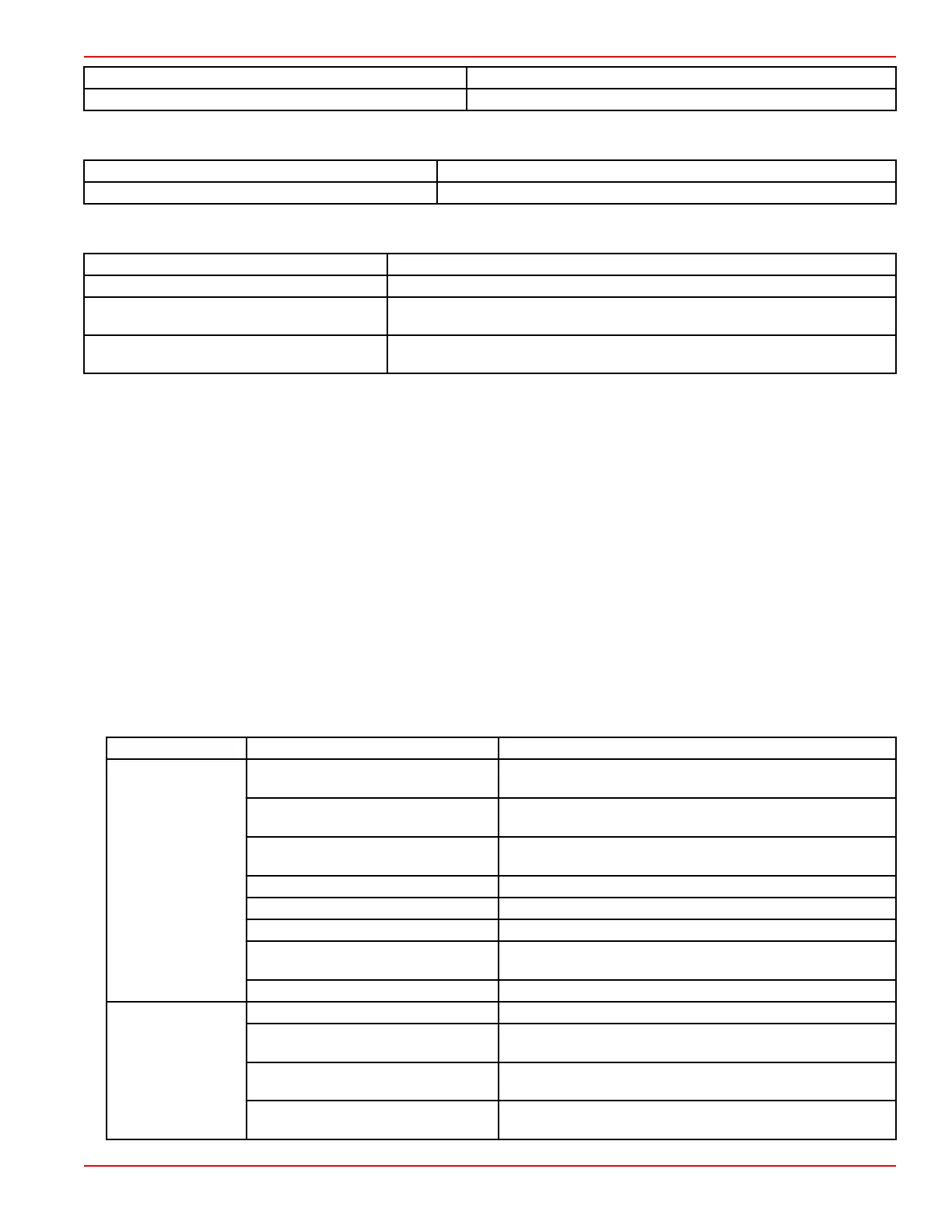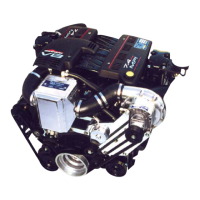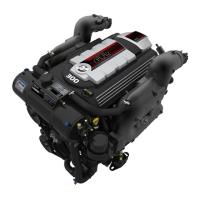Possible Cause Remedy
Seawater discharge restricted or plugged. Clean exhaust elbows.
Low Engine Temperature
Possible Cause Remedy
Faulty thermostat. Replace the thermostat.
Low Engine Oil Pressure
Possible Cause Remedy
Insufficient oil in the crankcase. Check and add oil.
Excessive oil in the crankcase (causing it to
become aerated).
Check and remove the required amount of oil. Check for the cause of excessive
oil (improper filling).
Diluted or improper viscosity oil.
Change the oil and oil filter, using the correct grade and viscosity oil. Determine
the cause for dilution (excessive idling).
NOTE: Refer to PCM 112 Diagnostic Manual for more information.
Water in the Engine
Important Information
IMPORTANT: First determine the location of the water in the engine. This information can be of great help when trying to
determine where the water came from and how it got into the engine. The three most common problems are water on top of the
pistons, water in the crankcase oil, and when both of those conditions occur simultaneously.
1. After locating the water, remove all the water from the engine by removing all the spark plugs and cranking the engine over
to pump out the cylinders.
2. Change the oil and the filter.
3. Start the engine and see if the problem can be duplicated. If the problem can be duplicated, a mechanical problem exists. If
the problem cannot be duplicated, the problem is either an operator error or a problem that exists only under certain
environmental conditions.
If the water is contained to the cylinders only, it is usually entering through the exhaust system. If the water is contained to the
crankcase only, it is usually caused by water entering through the intake manifold, a flooded bilge, or condensation. If the water
is located in both the cylinders and the crankcase, it is usually caused by water in the cylinders getting past the piston rings and
valves or complete submersion. Checking for water trails in the intake manifold or the exhaust manifolds is a good idea. Water
trails are a clue that water entered these areas.
Symptom
Cause Action
1. Water on top of
the pistons.
1.0 The operator shut the engine off at
a high RPM.
1.0 Refer to Section 3 ‑ On the Water in the Operation,
Maintenance and Warranty Manual.
1.1 Water ingestion through the
exhaust system.
1.1 Verify the exhaust elbow height. Repair the exhaust
system.
1.2 Improper engine or exhaust hose
installation.
1.2 Check the engine installation specifications.
1.3 Cracked exhaust manifold. 1.3 Replace the exhaust manifold.
1.4 Corroded exhaust elbow. 1.4 Replace the exhaust elbow.
1.5 Loose cylinder head bolts. 1.5 Tighten the cylinder head bolts.
1.6 Blown cylinder head gasket. 1.6 Determine the cause of the blown gasket and replace the
gasket.
1.7 Cracked valve seat. 1.7 Replace the valves.
2. Water in the
crankcase oil.
2.0 Water in boat bilge. 2.0 Drain the water from the bilge.
2.1 Engine stored outside, or with the
engine cover missing.
2.1 Ensure the engine is properly covered.
2.2 Intake manifold leaking near a
water passage.
2.2 Inspect the intake manifold for cracks. Check the gaskets.
2.3 Cracked or porous casting. 2.3 Check the cylinder head, the cylinder block, and the intake
manifold for cracks or porosity.
Engine Troubleshooting
90-8M0099748 eng DECEMBER 2015 © 2016 Mercury Marine Page 3C-11
